This article was co-authored by Laura Flinn. Laura Flinn is a National Academy of Sports Medicine (NASM) Certified Personal Trainer, USA Olympic Weightlifting Sports Performance Coach and Certified Fitness Nutritionist, with an additional qualification as a TRX Suspension Trainer. Laura runs her own personal training program based in the San Francisco Bay Area and specializes in topics such as weight loss, muscle growth, cardiovascular training, and strength training.
There are 20 references cited in this article, which can be found at the bottom of the page.
wikiHow marks an article as reader-approved once it receives enough positive feedback. This article received 18 testimonials and 89% of readers who voted found it helpful, earning it our reader-approved status.
This article has been viewed 1,417,687 times.
Belly fat, or visceral fat, is fat stored in and around your abdominal organs. It can increase your risks of cancer, high blood pressure, stroke, dementia, heart disease, and diabetes.[1] You cannot lose large quantities of weight or excess body fat within one week - especially visceral or belly fat. To get healthier and lose the dangerous belly fat, you'll need to change your diet, exercise routine, and lifestyle over a longer period of time. However, during a week you can start to make some great, health-promoting changes to your lifestyle.
Things You Should Know
- Boost your weight loss progress by eating healthy food groups like lean proteins, fresh produce, healthy fats, and whole grains.
- Cut back on foods that are high in sugar and fat to reduce your belly fat overall.
- Create a weekly workout plan to help you burn more fat and boost your metabolism. Aim for 5 days of cardio, 2-3 days of interval workouts, and 1-3 days of strength training.
Steps
Adding Helpful Foods to Reduce Belly Fat
-
1Indulge in the right types of fat. Studies have shown that eating the right types of fat, like monounsaturated fats, can help reduce belly or visceral fat by up to 20% over low-fat diets.[2]
- Monounsaturated fats are a type of fatty acid that has been linked to a decreased risk of heart disease, improved management of diabetes, and improved function of your blood vessels.[3]
- Although monounsaturated fats are considered healthy, they are still very calorie-dense. Do not add these, in addition, to an unhealthy diet or in addition to unhealthy sources of fat. These should replace those unhealthy sources of fat like trans or saturated fats.
- Monounsaturated fats are found in a variety of foods including olive oil, olives, nuts, seeds, nut butter, avocado, and canola oil.[4]
- Ideas to try include: replacing butter or lard with olive oil, grapeseed oil, or avocado oil.
-
2Eat lean protein. Lean sources of protein will help you stay satisfied longer throughout the day and help fuel your weight loss.[5]
- Make sure that you eat a source of lean protein at each meal. Measure out a 3-4 oz (21-28 grams) serving to stay within your calorie limit.[6]
- Replace all fatty proteins like high-fat cheese, red meat, and sausage with leaner cuts of protein like chicken, turkey, fish, beans/lentils, eggs, low-fat dairy, and nuts.
Advertisement -
3Add in fresh fruits and vegetables at every meal. Make sure at least half of your plate is filled with produce. These low-calorie foods are high in nutrients and can help you lose weight and reduce belly fat.[7]
- The best way to lose belly fat is through calorie reduction. When you make half your plate a fruit or vegetable, the low-calorie nature of these foods helps lower the overall calorie content of your meals.
- Measure out 1 cup of vegetables, 2 cups of leafy greens, or 1/2 cup of fruit. Include 1-2 servings at each meal.[8] [9]
-
4Choose whole-grain foods. When you're trying to reduce belly fat and get rid of dangerous visceral fat, you'll need to choose 100% whole grain foods when you're eating bread, rice or pasta.[10]
- 100% whole grains are significantly higher in fiber, protein, vitamins, and minerals compared to more refined grains. They are a much more nutritious choice.
- Refined grains are those that are overly processed and their vital nutrients are removed. Items like white bread, white rice, plain pasta, or crackers should be limited.
- Include a serving or two of 100% whole grains daily. Measure out 1 oz or 1/2 cup (125 ml or 25-30 grams) of items like quinoa, brown rice, whole-wheat pasta, whole wheat bread or millet.[11]
-
5Drink adequate amounts of water. Help keep your body feeling more satisfied and hydrated by drinking adequate amounts of water and other clear fluids each day.
- It's typically recommended drinking at least 8 glasses of water daily. However, even amounts up to 13 glasses per day have been recommended.[12]
- Water is essential for hydrating your body. It plays a vital role in regulating your body temperature and blood pressure.[13]
- In addition, adequate hydration helps manage your appetite. Plus, drinking a glass of water immediately prior to a meal can help you reduce your overall intake and support your weight loss.
Eliminating Problem Foods to Reduce Belly Fat
-
1Cut out sugar and refined white flour. Studies have shown that one of the biggest culprits of visceral fat is sugary beverages, sweets, and foods made from refined white flour.[14] Limit or cut out these foods to help reduce belly fat.
- Sweetened beverages like sodas, fruit juices, and sports drinks in addition to candy, desserts or pastries can increase visceral fat. In addition, foods made with white flour or are highly processed carbohydrates are also responsible for packing on fat. Look out for crackers, white bread, plain pasta, and white rice.[15]
- If you crave sugary sweets, try replacing your typical snack or treat with more nutritious food. For example, try low-fat Greek yogurt or fruit.
-
2Cut out alcoholic drinks. Many studies have shown that increased alcohol consumption is linked to increased amounts of visceral fat.[16] Limit or cut out alcoholic beverages to help reduce belly fat.
- In addition, many alcoholic beverages are mixed with sugary, sweetened beverages. The combination of sugar and alcohol together increases your risk for visceral fat.
- In general, women shouldn't drink more than 1 glass of alcohol daily and men should limit their alcohol to 2 glasses daily.[17]
-
3Limit high-fat foods. In addition to choosing sources of healthy fats to include in your diet, you should also try to limit or avoid certain types of fat that can increase belly fat and the chronic conditions associated with it.[18]
- Avoid all trans-fats. These fats are man-made and can cause hardening of the arteries, increased LDL (the bad cholesterol) and decreased HDL (the good cholesterol). Avoid all products that contain partially hydrogenated or hydrogenated oils. These are found in fried foods, processed foods and processed meats.[19]
- Eat only moderate amounts of saturated fats. There has been a lot of back and forth research over whether or not saturated fats are unhealthy. Since fats, in general, are higher in calories are you're trying to reduce weight and body fat, limit these types of fats. They are found in animal products like butter, full-fat cheese, red meat, and lard.[20]
- Make sure to limit fatty cuts of meat, fast foods, fried foods, processed meats as these types of foods are the highest sources of unhealthy fats.
Increasing Exercise and Activity
-
1Do interval workouts 2-3 days this week. Higher intensity interval workouts have become more popular. They are known to torch calories, but specifically burn higher amounts of body fat compared with traditional cardio.[21]
- A study conducted by the University of Virginia found that people who had 3 out of 5 cardio sessions per week with intervals burned more belly fat, although they technically burned the same calories during the workout itself. [22]
- Most gym machines come with interval programs. You can do interval programs on treadmills, stationary bikes, and elliptical machines.
- You can create your own high-intensity interval program by alternating between short bursts of very high-intensity exercises with longer bouts of more moderate-intensity exercises. For example, you can try alternating between 1-minute sprints and 5 minutes of jogging.
-
2Commit at least 30 minutes of cardio 5 days a week. In addition to interval training, studies have shown that it's equally important to do at least 30 minutes of cardio exercises each week to help reduce belly fat.[23]
- To specifically decrease visceral or belly fat, some health professionals even recommended doing up to 60 minutes daily of aerobic activities to have a more significant effect on visceral fat.[24]
- Try walking, biking, swimming, hiking, running, working out on an elliptical or rowing machine.
- Aim to do these activities at a moderate pace. This is usually described as when it is possible, but difficult, to keep up a conversation as you perform the activity.
-
3Increase your daily activity levels. Lifestyle activities are a great way to add more exercise to your day. Being more active throughout the day has been shown to have similar benefits to 150 minutes of planned cardio each week.
- Choose times when you are sedentary, such as watching TV, break time at the office or commuting and insert activity into the mix. Think of times when you can move more or take more steps.
- For example, do sit-ups, pushups, and planks during commercial breaks. Stretch while you are stuck in traffic and walk around the office during break time.
- You can also consider buying a pedometer or downloading a step counter app on your smartphone. These will help track how active you are during the day and a good way to see how much you've increased your activity level.
-
4Do strength training exercises 1-3 times this week. Weightlifting builds lean muscle mass which can help increase your body's metabolism and ability to burn calories at rest.[25]
- In addition, resistance training helps increase bone density and reduces your risk for diseases like osteoporosis.[26]
- Include bodyweight exercises, such as pushups, planks, squats or lunges. These are great toning exercises but also increase your heart rate.
- Learn to use free weights or weight machines.[27] Start with popular exercises like chest presses, rows, pec flys, overhead presses, front and side arm raises, lunges and squats or the leg press machine, calf raises, and biceps/triceps last. Tricep exercises include the tricep overhead press, tricep pulldowns on a cable pull, and tricep kickbacks.
- You may want to consider investing in a session with a personal trainer if you have never used weights before. They will be able to show you how to lift weights and provide you with an appropriate weight lifting program.
How Can I Shrink My Stomach Without Exercising?
Dietary Changes and Exercises to Help Lose Belly Fat
Expert Q&A
-
QuestionHow can I get a flat stomach in 2 days?
 Laura FlinnLaura Flinn is a National Academy of Sports Medicine (NASM) Certified Personal Trainer, USA Olympic Weightlifting Sports Performance Coach and Certified Fitness Nutritionist, with an additional qualification as a TRX Suspension Trainer. Laura runs her own personal training program based in the San Francisco Bay Area and specializes in topics such as weight loss, muscle growth, cardiovascular training, and strength training.
Laura FlinnLaura Flinn is a National Academy of Sports Medicine (NASM) Certified Personal Trainer, USA Olympic Weightlifting Sports Performance Coach and Certified Fitness Nutritionist, with an additional qualification as a TRX Suspension Trainer. Laura runs her own personal training program based in the San Francisco Bay Area and specializes in topics such as weight loss, muscle growth, cardiovascular training, and strength training.
NASM Certified Personal Trainer You cannot realistically shed the weight required for a flat stomach in 2 days. There's just no healthy way to do it. The best way to get a flat stomach is to stick with a healthy diet and get regular exercise. If you want to tone your stomach to make it appear flatter, you can use core exercises, like crunches.
You cannot realistically shed the weight required for a flat stomach in 2 days. There's just no healthy way to do it. The best way to get a flat stomach is to stick with a healthy diet and get regular exercise. If you want to tone your stomach to make it appear flatter, you can use core exercises, like crunches. -
QuestionWhat is the best thing to drink to lose belly fat?
 Michele DolanMichele Dolan is a BCRPA certified Personal Trainer in British Columbia. She has been a personal trainer and fitness instructor since 2002.
Michele DolanMichele Dolan is a BCRPA certified Personal Trainer in British Columbia. She has been a personal trainer and fitness instructor since 2002.
Certified Fitness Trainer Water is the best thing to drink if you are trying to lose fat. It has no calories. Drink 6-12 glasses of water each day.
Water is the best thing to drink if you are trying to lose fat. It has no calories. Drink 6-12 glasses of water each day. -
QuestionWhat do I eat on mornings to reduce belly fats?
 Michele DolanMichele Dolan is a BCRPA certified Personal Trainer in British Columbia. She has been a personal trainer and fitness instructor since 2002.
Michele DolanMichele Dolan is a BCRPA certified Personal Trainer in British Columbia. She has been a personal trainer and fitness instructor since 2002.
Certified Fitness Trainer Some great breakfast foods include any one or two of the following: oatmeal 125ml or half a cup, eggs (2), 1 slice of wholegrain bread with a thin spread of nut butter 15 ml or 1 tbsp), low-fat cottage cheese (125 ml or half a cup) with fruit, plus any serving of fruit and a glass of reduced fat milk, soy milk or almond milk, tea or coffee without sugar. Some wholegrain breakfast cereals with milk would also be fine but read the label. You want to see higher protein than fat or sugar.
Some great breakfast foods include any one or two of the following: oatmeal 125ml or half a cup, eggs (2), 1 slice of wholegrain bread with a thin spread of nut butter 15 ml or 1 tbsp), low-fat cottage cheese (125 ml or half a cup) with fruit, plus any serving of fruit and a glass of reduced fat milk, soy milk or almond milk, tea or coffee without sugar. Some wholegrain breakfast cereals with milk would also be fine but read the label. You want to see higher protein than fat or sugar.
References
- ↑ http://www.prevention.com/weight-loss/flat-belly-diet/flat-belly-diet-subcutaneous-and-visceral-belly-fat
- ↑ http://www.prevention.com/health/diabetes/fight-diabetes-mufas
- ↑ http://www.mayoclinic.org/healthy-lifestyle/nutrition-and-healthy-eating/expert-answers/mufas/faq-20057775
- ↑ Laura Flinn. NASM Certified Personal Trainer. Expert Interview. 18 November 2019.
- ↑ http://www.health.harvard.edu/staying-healthy/abdominal-fat-and-what-to-do-about-it
- ↑ http://www.choosemyplate.gov/protein-foods
- ↑ http://www.health.harvard.edu/staying-healthy/abdominal-fat-and-what-to-do-about-it
- ↑ http://www.choosemyplate.gov/fruit
- ↑ http://www.choosemyplate.gov/vegetables
- ↑ http://www.health.harvard.edu/staying-healthy/abdominal-fat-and-what-to-do-about-it
- ↑ http://www.choosemyplate.gov/grains
- ↑ http://www.mayoclinic.org/healthy-lifestyle/nutrition-and-healthy-eating/in-depth/water/art-20044256
- ↑ http://www.mayoclinic.org/healthy-lifestyle/nutrition-and-healthy-eating/in-depth/water/art-20044256
- ↑ https://www.rush.edu/health-wellness/discover-health/losing-belly-fat
- ↑ https://www.rush.edu/health-wellness/discover-health/losing-belly-fat
- ↑ http://www.ncbi.nlm.nih.gov/pubmed/8653140
- ↑ http://www.mayoclinic.org/healthy-lifestyle/nutrition-and-healthy-eating/in-depth/alcohol/art-20044551
- ↑ Laura Flinn. NASM Certified Personal Trainer. Expert Interview. 18 November 2019.
- ↑ http://www.heart.org/HEARTORG/GettingHealthy/NutritionCenter/HealthyEating/Trans-Fats_UCM_301120_Article.jsp#.VpFlstBldUQ
- ↑ http://www.heart.org/HEARTORG/GettingHealthy/NutritionCenter/HealthyEating/Saturated-Fats_UCM_301110_Article.jsp#.VpFlodBldUQ
- ↑ http://www.ncbi.nlm.nih.gov/pmc/articles/PMC2991639/
- ↑ http://www.prevention.com/fitness/fitness-tips/lose-your-belly-fat-8-week-walking-workout
- ↑ http://www.health.harvard.edu/staying-healthy/abdominal-fat-and-what-to-do-about-it
- ↑ http://www.health.harvard.edu/staying-healthy/abdominal-fat-and-what-to-do-about-it
- ↑ http://www.cdc.gov/physicalactivity/basics/adults/index.htm
- ↑ http://www.cdc.gov/physicalactivity/basics/adults/index.htm
- ↑ Laura Flinn. NASM Certified Personal Trainer. Expert Interview. 18 November 2019.
- ↑ http://www.prevention.com/weight-loss/weight-loss-tips/how-to-prevent-weight-gain-due-to-stress-and-anxiety
About This Article
To reduce belly fat in 1 week, eat lean protein, such as beans, eggs, and nuts, to help you stay full for longer periods of time. Additionally, add fresh fruits and vegetables to every meal since they're high in nutrients but low in calories. You should also aim to do 30 minutes of cardio 5 days a week, such as biking, running, or swimming. In order to lose more belly fat, do strength training exercises 1 to 3 times a week. To learn how to lose belly fat by drinking water, keep reading!



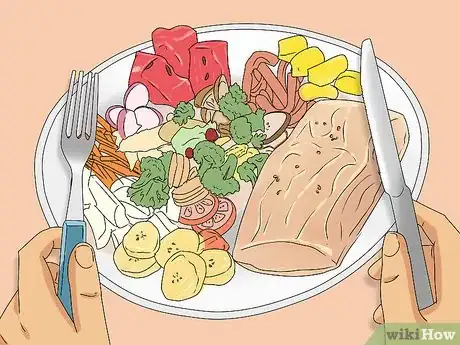
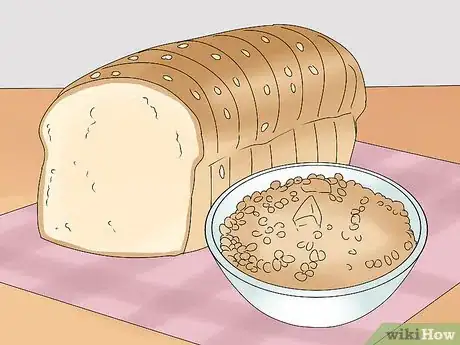
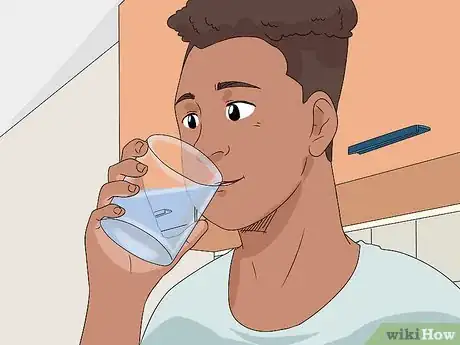





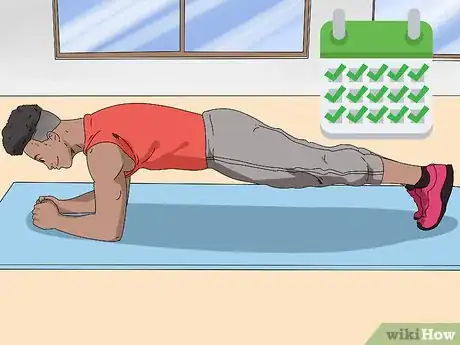






-Step-14.webp)
-Step-14.webp)

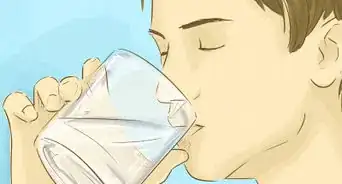
-Step-14-Version-3.webp)


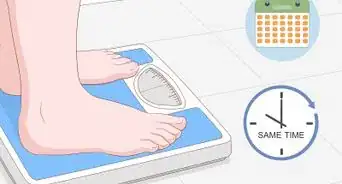
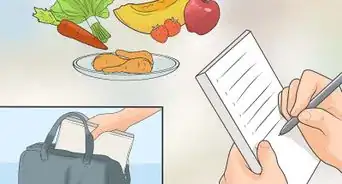














-Step-14.webp)
-Step-14.webp)


































